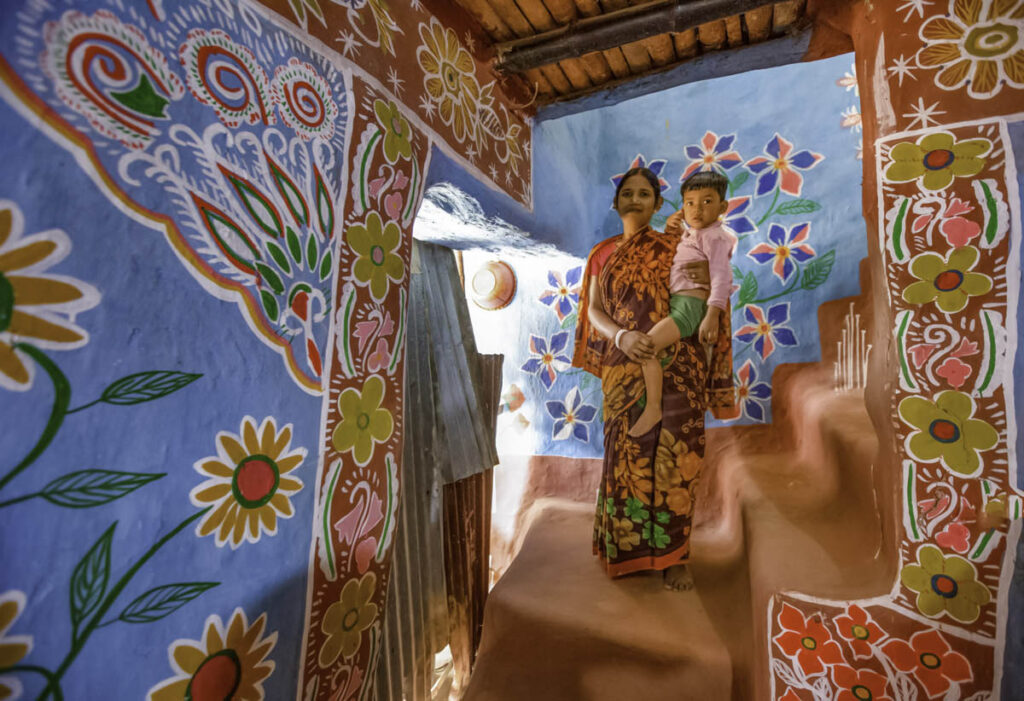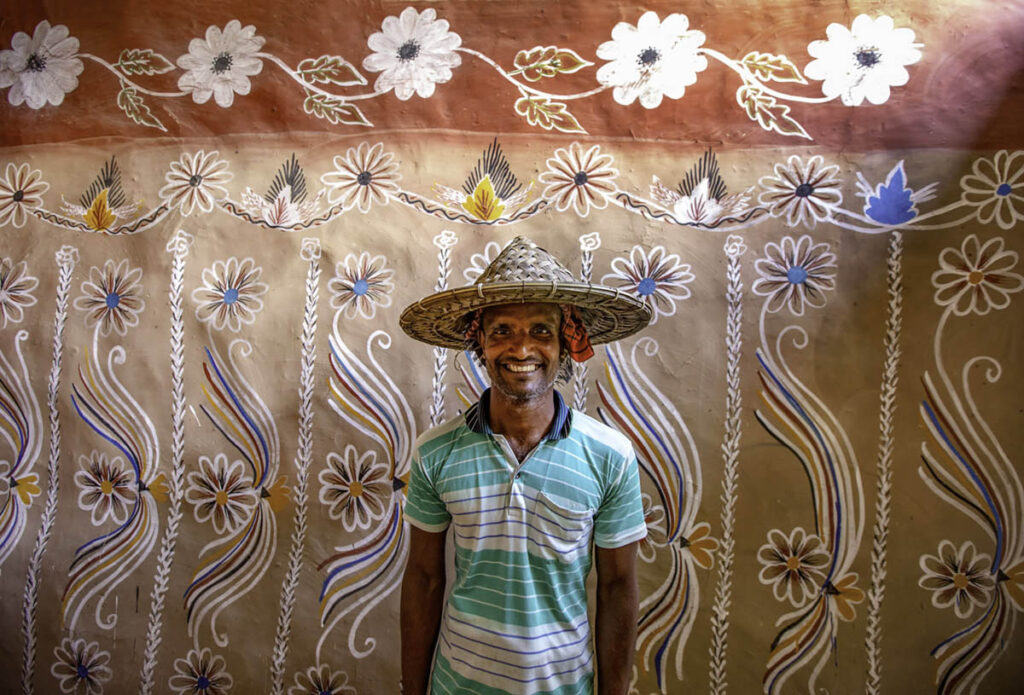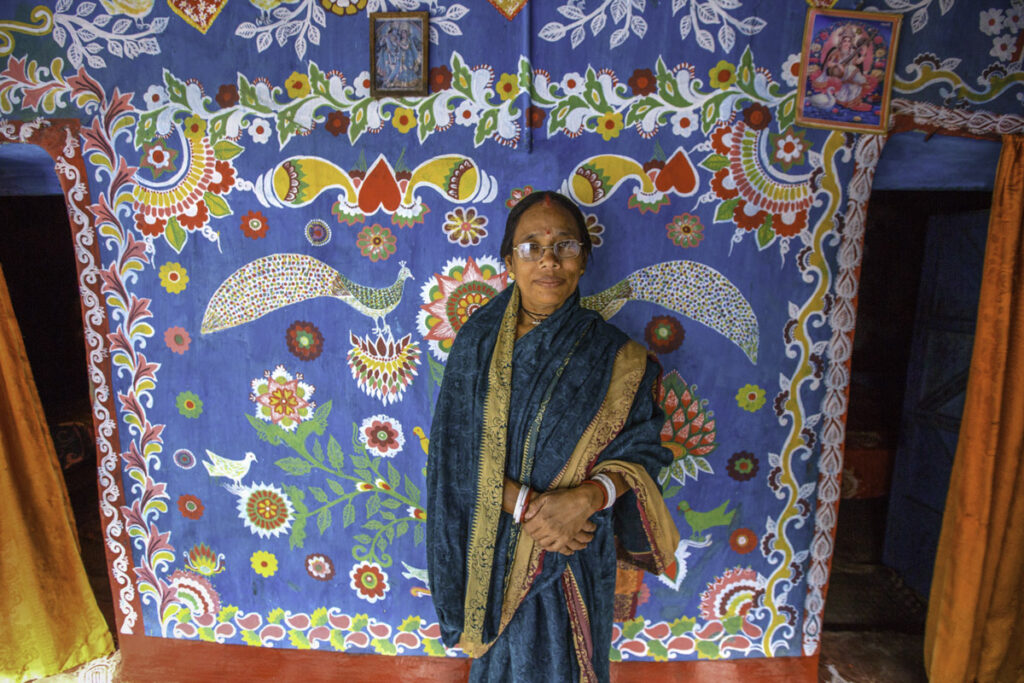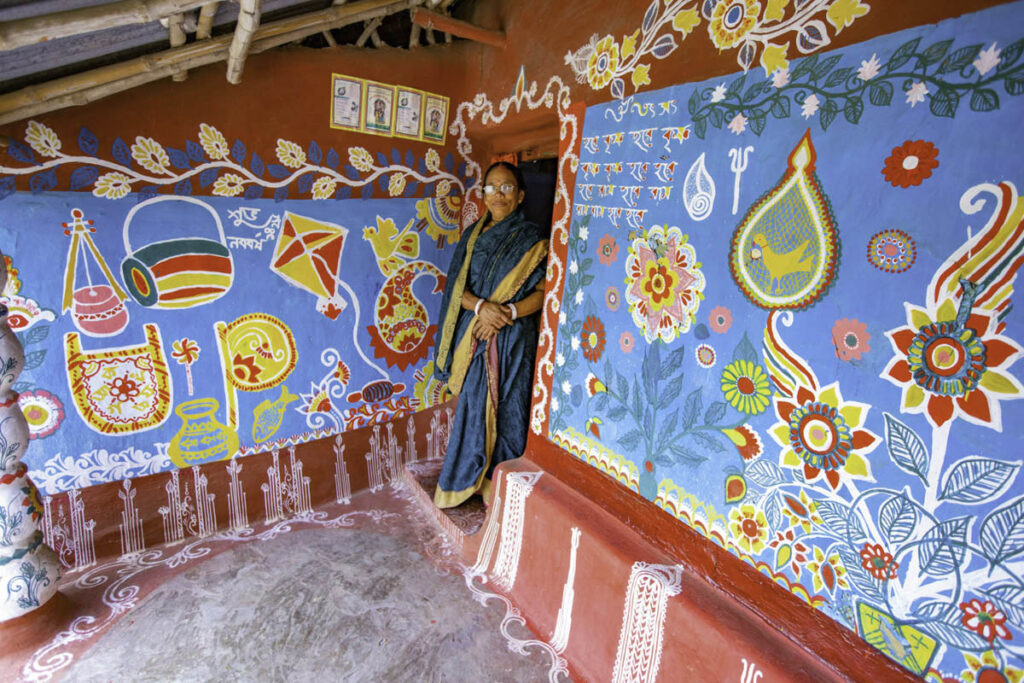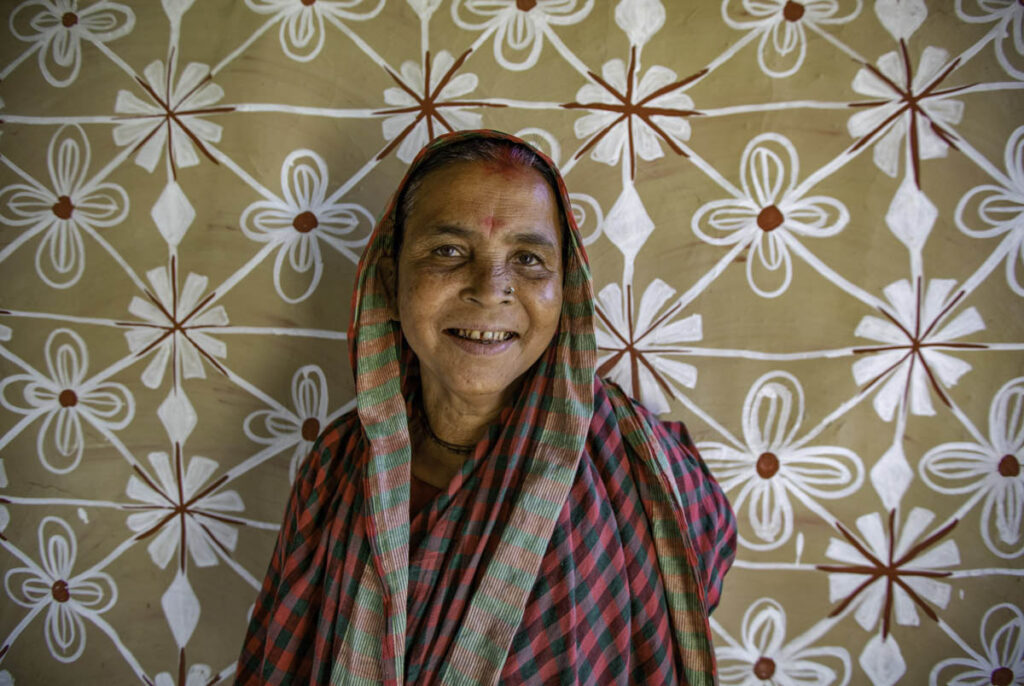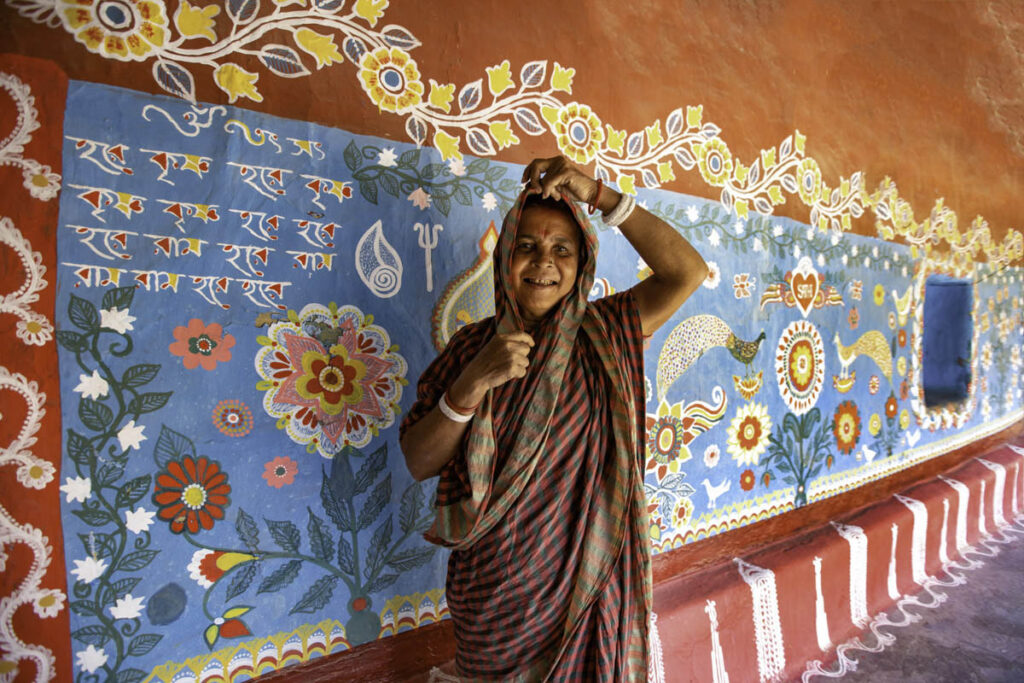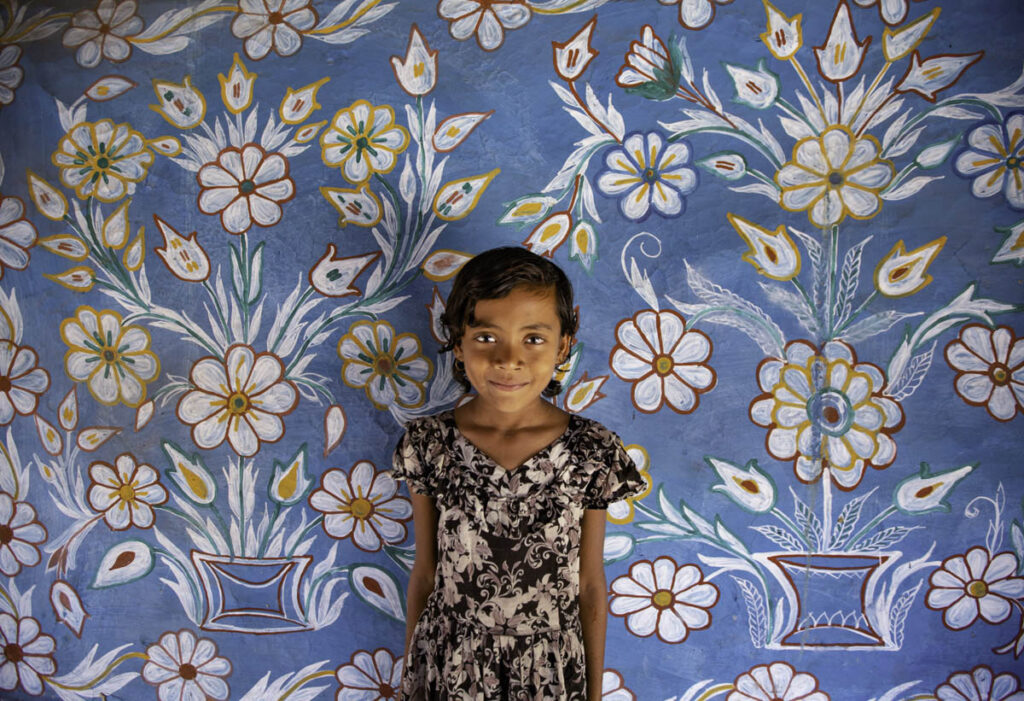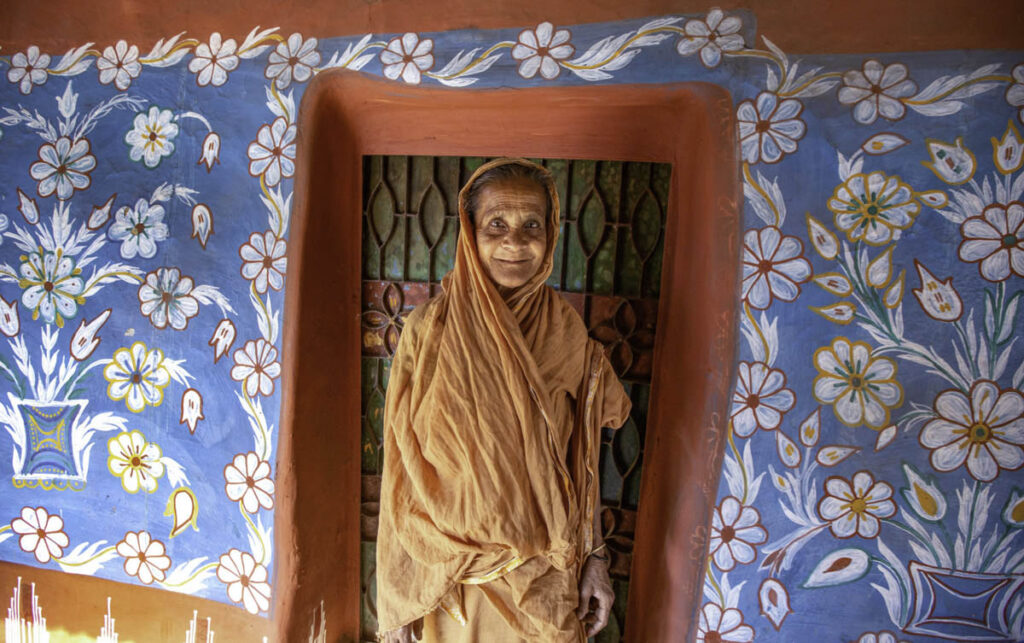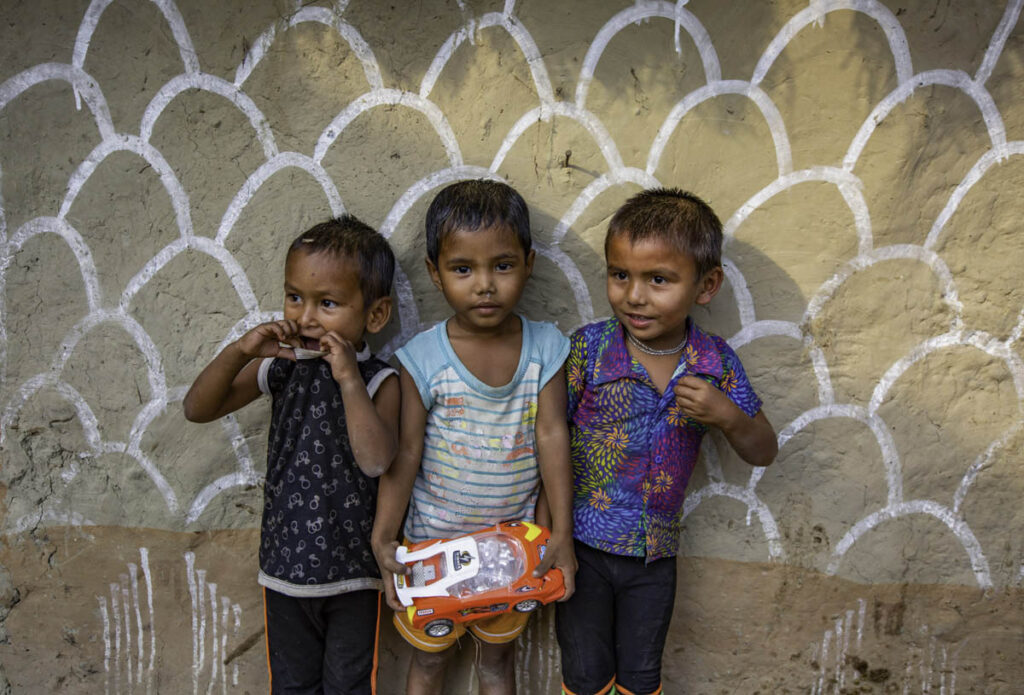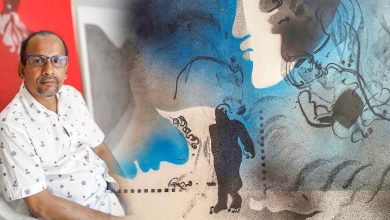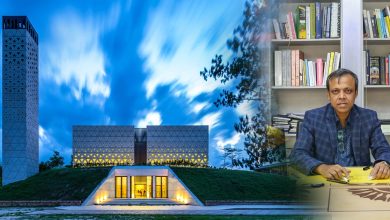VIBGYOR: Seven Hues of a Smile
A small village, Tikoil, in Nachole Upazila of Chapai Nawabganj District in the Division of Rajshahi, is undoubtedly a rare find for someone with a keen eye for raw talent. Village less, a colourful movie set more, this place has drawn many foreign eyes to cross lands just to see the vision for themselves. One woman who had entered the realm of art is the reason why this unique place has conceived its name, Alpona Village.
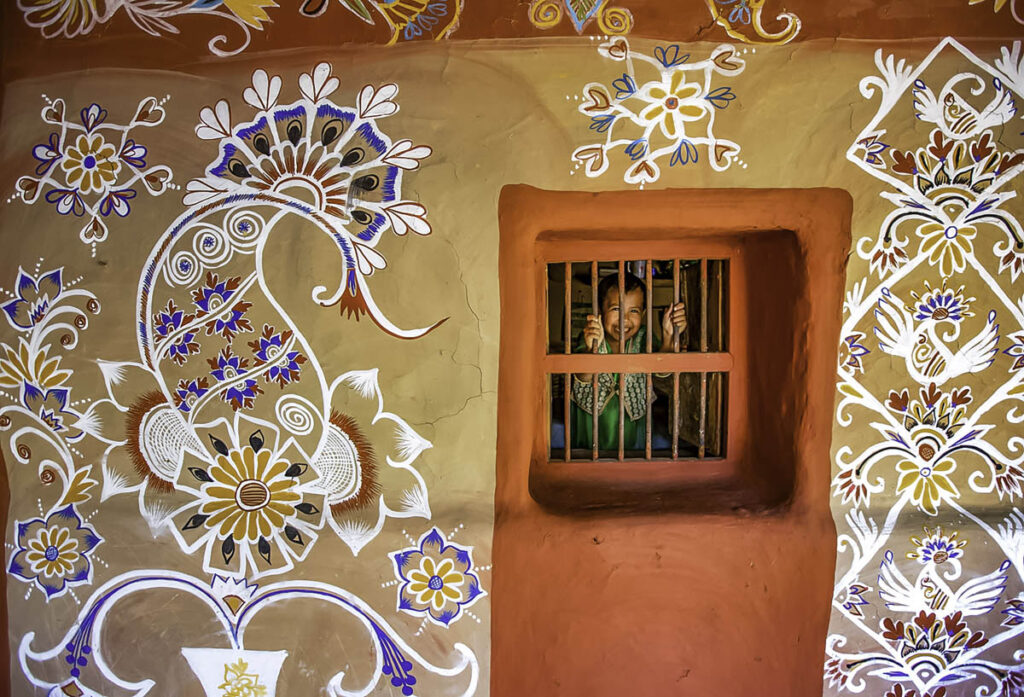
Srimati Deykhon Burman, pioneer of Alpona art in her village, first came to Tikoil after she got married at an early age.
The young mind drew to her heart’s content, not on pages, but her four-walled domain, and made it into her home.
She drew out of passion, which later came to pass on to the generations that came after her. Since Deykhon Burman had started Alpona art, it’s been going on for over three decades now. It is only women and girls of the village who do Alpona. Even though it is not performed out of any religious obligation, they, however, do believe that it brings them good fate. “We take it as our moral responsibility to carry on this legacy, but we draw it for our own attraction as well”, expressed the crafty indigenous women of Burman’s family. Alpona has now become their way of life.
Albeit the true origin of Alpona is unknown, it is nonetheless an archaic folk art of Bengal. Burman’s stunning vibrant motifs range from simple identical patterns to various designs of what makes up their nature-filled daily life: kites, cows, huts, birds, flowers & leaves, etc. Primarily, several types of flowers and paisley patterns are drawn with white borders, filling them in with vibrant colours. Since the homes are made of clay, it makes up to be the perfect canvas for their drawings. Not just the exterior of the house is filled with Alpona drawing, but so is the inside of their home. For the drawing and painting, they would once use chalk powder, ochre soil, colour, and turpentine. However, those ingredients didn’t provide much durability. Therefore, they later came to use ochre pigment, crushed dry plum’s glue, old mango seed’s crushed kernel, chalk powder, painting colour, giant taro, and banana tree sap, which they keep soaked as a mixture for four to five days before painting with it.
Tikoil predominantly consists of Hindu population. Two to three times a year during their Hindu festivals, they redo their Alpona. Burman being the first to introduce Alpona in the village led others to be inspired by her and follow her footsteps. All the houses in Tikoil adorned by Alpona reflect the painters’ individuality. Most of all, she feels overjoyed that something that may not be widely known among people of her country has nonetheless caught the eye of foreign people and mesmerized them.
Burman stated, “What I have started will go on, there is no stopping it.”
The impeccable pictures of Alpona village have been captured by the visionary photographer, Tanmoy Das. He had set out his journey with the hope of representing the niche cultural aspects of Bangladesh to the foreign world. Tanmoy’s approach to taking a photo is first observing and immersing in the sight, then capturing it.
Photography by Tanmoy Das

